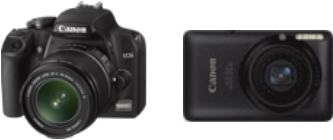Is a post-edited photo still a photo?
Before we can answer this question, we first have to define what post-production means, and where it starts?
With digital photography, post-editing starts within the camera. Indeed, and unless you are shooting in raw format, the camera itself is making some choices as to how to convert the bits sent by the sensor into an image: white balance, color rendition, noise reduction, compression: all of these are very complex algorithms that run in the camera before the image is stored in the memory card.
To be productive, let’s assume that post-editing is “conscious” post-editing, which is operations that you are doing on purpose after you upload the image to your computer.
Purists say that a good photographer should be able to get a good photo without having to manipulate it with a computer. This is not always true and most of the best images that you see, for example, on Flickr have been manipulated in a way, the minimum being saturation and contrast setting.
My personal position is that, as long as the final photo remains realistic, there is no reason why you would deprive yourself from improving it. Photography is not just about shooting. It is a whole process which allows you to transform a scene into a story-telling, emotion-conveying image.
What do you think?
Before we can answer this question, we first have to define what post-production means, and where it starts?
With digital photography, post-editing starts within the camera. Indeed, and unless you are shooting in raw format, the camera itself is making some choices as to how to convert the bits sent by the sensor into an image: white balance, color rendition, noise reduction, compression: all of these are very complex algorithms that run in the camera before the image is stored in the memory card.
To be productive, let’s assume that post-editing is “conscious” post-editing, which is operations that you are doing on purpose after you upload the image to your computer.
Purists say that a good photographer should be able to get a good photo without having to manipulate it with a computer. This is not always true and most of the best images that you see, for example, on Flickr have been manipulated in a way, the minimum being saturation and contrast setting.
My personal position is that, as long as the final photo remains realistic, there is no reason why you would deprive yourself from improving it. Photography is not just about shooting. It is a whole process which allows you to transform a scene into a story-telling, emotion-conveying image.
What do you think?


 RSS Feed
RSS Feed